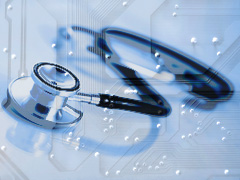by jasonP
Imagine a common medical situation: An older patient, with chronic health issues, needs to be monitored by one or more medical devices regularly. Then a healthcare provider must review the data frequently to monitor the patient’s condition. In the past, this situation mandated that the patient be in a hospital setting, connected to bulky devices, with healthcare personnel nearby. This scenario is very expensive, and is stressful and depressing for the patient, which complicates their treatment and/or recovery.
Now imagine that the devices could function at the patient’s home, sometimes wirelessly, and that the healthcare provider who monitors the device output could be miles away. With new advances in wireless technology, portable device technology, and remote-monitoring software, this future is a reality now.
There are dozens of devices now available for in-home health monitoring. Many types of monitoring are available, from blood-pressure, to EKG, to blood chemistry. Many are even built for the patient to configure and operate themselves. Some can be connected to your home computer, and their output can be uploaded to a centralized Electronic Medical Record (EMR) repository, like Microsoft’s HealthVault. Here is some info about the devices which work seamlessly with HealthVault.
To foster new development of ‘home-health devices,’ GE and Intel announced a joint venture this week, which will focus on portable, wireless, and even ‘wearable’ devices for home health monitoring. The main goal is to give the patient greater freedom and a more comfortable environment. Additionally, taking the patient out of the hospital environment saves a great deal of money.
As a precursor to this joint venture, the two companies have already been collaborating with Mayo Clinic to study the efficacy of home health monitoring. As noted in this article, earlier this year, they began home-based monitoring of a group of chronically ill patients. Their data is fed to a central computer system every day, where doctors can see graphic representations of their vitals over time, to see trends and long-term progress.
There is already some evidence that being in the more comfortable environment, with nurturing family support, results in much better medical response.
This type of healthcare is clearly the future and much is being done on several fronts. Last week, the FCC and the FDA announced a new partnership to clear the way for this class of devices. The goal is to allocate wireless frequency spectrum and codify device safety regulations, to enable these devices to reach market as quickly and as safely as possible.
Now let’s revisit our common medical situation, but with the future of care in mind: Now, instead of being chained to a hospital bed, connected to bulky devices, with medical personnel hovering nearby, our older patient with chronic health issues can stay at home, with small devices strapped to their body. They can move about their house as much as their condition permits, while their vital data is streamed wirelessly to a doctor miles away. The patient can be surrounded by their family in a familiar environment, leading to a much greater quality of life, and probably better overall health. And this scenario will cost a fraction of what hospitalization would cost. Better care, better quality of life, and great cost savings… the future of medicine is here.
Also, two quick followups to some earlier posts (here and here) about mobile devices in healthcare:
It seems iPhones and iPads are becoming essential tools in hospital settings. Two different articles, here and here.








